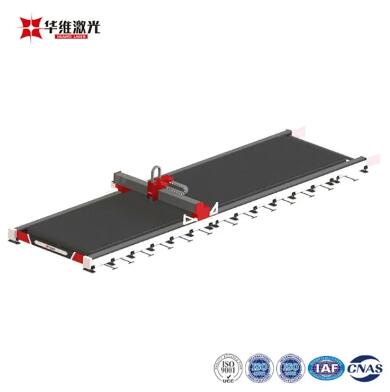Decoding the Technical Specs: What You Need to Know About Large-Format Fiber Laser Cutting Machines
2024-08-16
Introduction
Large-format fiber laser cutting machines are at the forefront of modern manufacturing, offering unmatched efficiency and precision. However, navigating the technical specifications can be overwhelming for those new to this technology. In this blog, we’ll break down the key specs—cutting speed, laser power, and working area dimensions—to help you make an informed decision when selecting a machine.
Cutting Speed: Maximizing Productivity
Cutting speed is a critical factor that defines how quickly a fiber laser cutting machine can perform its tasks. For manufacturers, this directly translates into production efficiency.
- Measurement and Impact: Cutting speed is typically expressed in meters per minute (m/min). A higher cutting speed means faster production, which is particularly beneficial for high-volume industries.
- Variable Factors: The actual cutting speed achieved depends on the material being processed, its thickness, and the laser power. For example, a high-power laser may cut through thick steel at a faster rate than a lower-power counterpart.
Laser Power: The Heart of the Machine
The power of the laser, measured in kilowatts (kW), is central to a fiber laser cutting machine's capability. It dictates the range of materials that can be processed and the thickness that can be cut.
- Power Range: Laser powers for large-format machines typically range from 1kW to 12kW or more. Machines with higher power are capable of cutting thicker materials, making them suitable for heavy-duty applications.
- Material Versatility: A machine with 4kW to 6kW power can efficiently cut through materials like stainless steel, aluminum, and brass, with thicknesses up to 25mm. For more specialized applications, higher power lasers can handle even greater thicknesses with precision.
Working Area Dimensions: Scaling Up Your Operations
The working area of a fiber laser cutting machine is the physical space where the material is placed for cutting. The dimensions of this area determine the maximum size of the workpiece that can be handled in one go.
- Standard vs. Custom: Common working area sizes include 3000mm x 1500mm, 4000mm x 2000mm, and even larger. A larger working area allows for the processing of bigger sheets or simultaneous cutting of multiple smaller parts, enhancing operational efficiency.
- Importance of Size: For industries like construction, aerospace, or shipbuilding, where large parts are common, a machine with a larger working area is essential. It reduces the need for repositioning, saving time and ensuring greater precision.
Conclusion
Selecting the right large-format fiber laser cutting machine involves understanding key specifications such as cutting speed, laser power, and working area dimensions. By aligning these specs with your production needs, you can choose a machine that not only meets your current demands but also scales with your business growth, ensuring long-term success in a competitive market.



